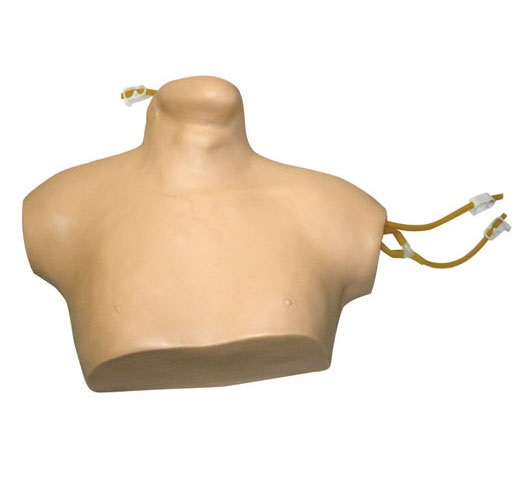Homepageпјҡ NEWS >> What puncture path training does the central venous puncture intubation model support?
Central venipuncture intubation model is an indispensable tool in medical education and clinical skills training. It can simulate real human anatomy and puncture process, and provide trainees with training experience close to actual combat. The puncture path training supported by this model mainly includes the following aspects:

1. Subclavian venipuncture path
Location of the puncture point: The puncture point of the subclavian vein is clearly marked on the model, which is usually located at the middle 1/3 segment of the right clavicle, below the inferior margin of the clavicle, or at the lateral supraclavicular margin of the head of the clavicle of the sternocleidomastoid muscle.
Operation simulation: Participants can simulate the use of a 5ml or 50ml syringe on the model, or a special puncture needle, from the selected puncture point into the subclavian vein. The model design has a realistic vascular structure, the puncture is obviously disappointed, and the withdrawal can simulate red blood to indicate the success of the puncture.
2. Internal jugular vein puncture path
Location of puncture point: The puncture point of the internal jugular vein puncture is usually located in the supraclavicular triangle of the sternocleidomastoid muscle (between the sternocleidomastoid muscles), and the direction is toward the sternoclavicular joint.
Operation simulation: Students use a syringe or puncture needle of the same specification to simulate the model, and enter the needle from the puncture point of the internal jugular vein. During the puncture process, the vascular structure of the model can be felt and the feeling of frustration during the injection can also be simulated by pumping red blood.
3. Other possible puncture paths
Transperipheral venipentesis: Some advanced central venipentesis intubation models also support central vein catheterization training through peripheral veins (such as noble vein, cephalic vein, median cubit vein, etc.). These models are able to simulate the anatomy of peripheral veins and the puncture process to help students master more comprehensive puncture skills.
4. Comprehensive skill training
Cardiac floating catheterization training: Some models also support cardiac floating catheterization training, where students can simulate cardiac catheterization operations on the model to further improve their comprehensive skills.
Central venous pressure measurement training: With the relevant equipment and functions on the model, participants can also conduct central venous pressure measurement training and learn about its practical clinical application.
In summary, the central venipuncture intubation model supports the training of multiple puncture paths, including mainstream puncture paths such as subclavian venipuncture and internal jugular venipuncture, as well as other possible puncture paths such as peripheral venipuncture. The comprehensive coverage of these training paths provides students with a rich variety of training options to help them fully master the skills of central venipuncture catheterization.